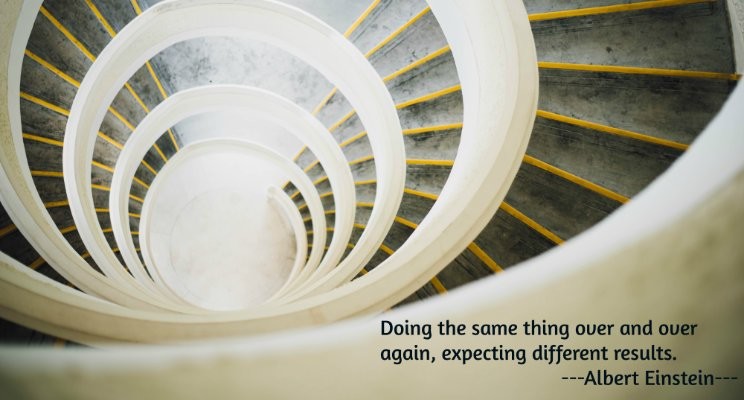No matter their mission, nonprofits share an unending supply of passion for their cause. They’re determined to bring their goods and services to as many clients as possible. However, budgets largely determine their reach, and since those budgets are fueled by fundraising, the spending model must stay lean. Here’s where non-profit leadership habits differentiate successful nonprofits from struggling ones.
When you strengthen non-profit leadership habits and implement non-profit process improvement, you’ll turn the odds in your favor. I’m a huge believer that nonprofits should assess their spending yearly, and invest in products and services that improve strategy, stretch budget dollars, and strengthen the future of the organization. Today, we’re covering five non-profit leadership habits (plus beneficial products and services) that will extend your reach in 2022.
Make Strategic Goals
“What gets measured, gets done,” is a key philosophy when it comes to goal setting. Strategic goals tell us how to recognize success. They help focus time, money and resources. Take the time to write down your strategic goals; sticky notes or a white board work just fine. If you’d like to use a helpful product to create a virtual version, I’d recommend Template Lab, Trello, or ClickUp. Once you’ve determined your strategic goals, track and update your progress regularly.
Write SOPs
Your strategic goals articulate the “what” of the business, but SOPs are the “who and how.” First, document your current operating procedures. This includes everything from receiving, processing, and acknowledging donations to delivering your product or service to your constituents. Draft your procedures using a tool like Lucidchart or Miro, then roll them out to your staff. If you’d like to create a digital handbook, Waybook can help, and of course, an old-fashioned document or PDF is always an option.
Measure your SOPs against your goals, and update them as necessary to strengthen outcomes. Not sure of where to start improving? Think through the areas that need to scale, or the ones that have the most inconsistency. Non-profit process improvement delivers a big impact for your organization’s overall success.
Have Technology Oversight Represented on Your Board
At first, this point may seem like overkill, particularly if you have a small start-up. Don’t dismiss it. During 2020 and 2021, virtual events surged to the forefront, and many organizations found that a virtual gala could raise between 75% and 125% of an in-person event…without the overhead. Virtual events are likely to continue, regardless of pandemic restrictions.
Though going virtual means you’ll avoid overhead costs for table rentals and catering, pulling off a stellar virtual gala requires a different type of preparation. Technology is complex, and you’ll need an expert who understands the happy collision of tech functionality and strategic opportunity. Invite that expert to the table and focus your efforts elsewhere.
Invest in a Security Assessment
As virtual connectedness increases, so do security risks. According to CohnReznick, 40% of nonprofits agree that cybersecurity is a top three risk to the organization. More data is passing through more systems, which means more potential for exposure. Currently, security measures generally fall to the operations team, HR staff, or executive director. These individuals likely don’t have the background to adequately recognize issues and shore up security. Even if they do, everyone benefits from an outside set of expert eyes.
In a nonprofit, data is often composed of constituents’ personal information, so security concerns are heightened. Volunteers and employees should only see the data they need. Ensure that data is being protected through penetration testing and two-factor authentication. Do some research on action steps you can take to increase security in your organization. Invest in protection of data, and make sure you have a solid data and security policy. Dust it off, actually read it, and update it yearly.
Mine Data
You’ve gathered data and ensured it’s protected; now what? Use it to strategize new ways to bring your cause to the world. Mine your data to discover segments of your donors or constituents and understand how best to reach them. Set new benchmarks or tweak old ones. You’ll be able to celebrate success as you hit strategic targets, and you’ll likely develop new programs to complement your current offerings. Looking at data will show you which fundraising ideas are paying off so you can focus your efforts.
Not sure how to slice and dice the data yourself? A business analyst can help you look for patterns in the data you collect. A marketing firm can help you look at engagement from the data you may already receive from Google analytics or software like Constant Contact or Mailchimp. A minimal investment here (or an appeal to your volunteer base) may show you where to grow in the future.
***
At nonprofits, it’s about passion and reach for your offering or service. The TGR Management Consulting team shares your passion. Volunteerism is a core value of ours at TGR Management Consulting. In fact, it’s something each and every one of our team members have demonstrated prior to being hired. Because we believe all humans want to be part of something bigger than themselves and together, we are better. When you partner with a consulting company that prioritizes the greater good, your business will feel the effects.
Not sure where to go from here? TGR can help. Visit TGRManagementConsulting.com




